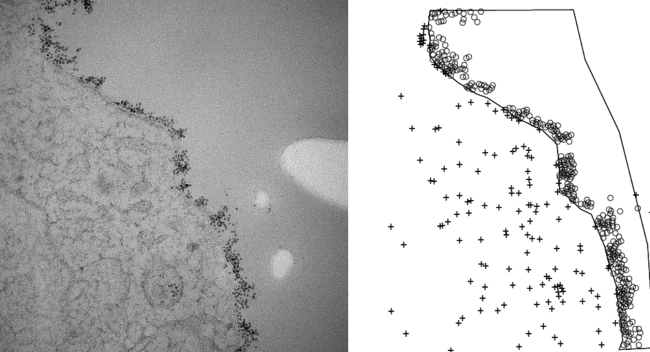Automatized detection of cationized ferritin allows for in-depth analyses of glycocalyxloss on blood vessels
- Abstract number
- 197
- Event
- European Microscopy Congress 2020
- DOI
- 10.22443/rms.emc2020.197
- Corresponding Email
- [email protected]
- Session
- LSA.3 - Applications for imaging sub-cellular events at high resolution
- Authors
- Dr Casper Hempel (3), Professor Jon Sporring (2), Dr Christina Christoffersen (1), Professor Thomas Lars Andresen (3)
- Affiliations
-
1. Department of Clinical Biochemistry, Copenhagen University Hospital
2. Department of Computer Science, University of Copenhagen, Denmark
3. Department of Health Technology, Technical University of Denmark
- Keywords
Endothelial glycocalyx, Image analysis, Transmission EM, vasculature
- Abstract text
The endothelial glycocalyx covers the luminal surface on all blood vessels. It is involved in maintaining vascular homeostasis by regulating blood flow and permeability to immune cells and platelets. The anatomical structure of this entity has been debated due to discrepancies between in vivo and ex vivo methods. To support an unbiased analysis of the endothelial glycocalyx we developed a quantitative method based on cationized ferritin that binds to the negatively charged carbohydrates, mostly heparin sulfate, on the vasculature (figure 1 and 2). This approach results in detailed information about the amount of ferritin bound and its distance to the plasma membrane. We subjected mice to enzymatic removal of specific carbohydrate epitopes and post mortem analysed to what extent cationized ferritin bound to the glycocalyx. We notice significant changes, which give indications of glycocalyx composition ex vivo. Hyaluronidase did only impact the glycocalyx negligible, while Heparanase treatment resulted in reduced detection when using ferritin. Furthermore, we analysed low-density lipoprotein (LDL) receptor KO mice that were subjected to a cholesterol-rich diet and thus served as a model for experimental atherosclerosis. Also, in this model we notice changes in glycocalyx composition, which could have impact on the permeability of LDL particles that are known to accumulate in atherosclerotic plaques. In atheroprone arteries the loss is almost complete, but also in capillaries in the heart, the heparan sulfate binding cat ionized ferritin is reduced significantly. With this unbiased tool we aim to provide quantitative measures of the glycocalyx that can inform on changes in the glycocalyx, which can impact vascular homeostasis.

